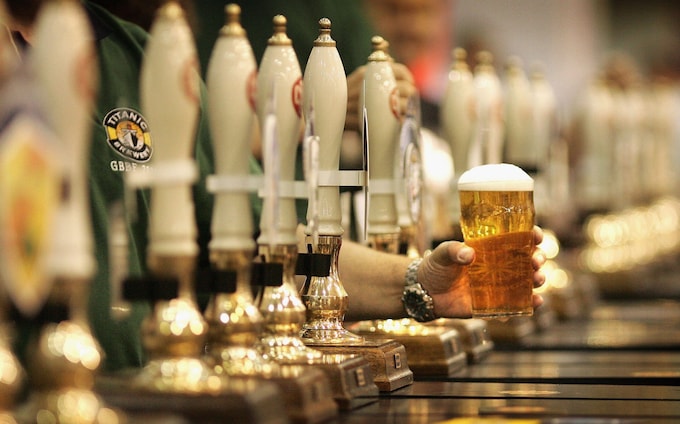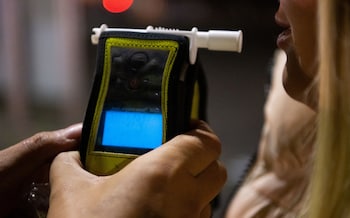The current legal limit for driving of 80mg of alcohol per 100ml of blood – or 0.08 per cent

The current limit translates to two pints of lower-strength lager for men and a large glass of wine for women
Credit: Peter Macdiarmid/Getty Images
Doctors are to urge the next Government to cut the drink-drive limit so people can only consume one small glass of wine or beer before getting behind the wheel.
The British Medical Association is calling for the limit in England to be reduced and brought into line with Scotland.
The current legal limit for driving of 80mg of alcohol per 100ml of blood – or 0.08 per cent– was established in 1967 and is one of the highest limits in Europe. It roughly translates to two pints of lower-strength lager for men and a large glass of wine for women.
A new 50mg limit would be roughly equivalent to one small glass of wine or beer but would vary according to factors such as weight and food consumption that day,as the ability of the body to absorb alcohol varies widely.

Evidence reveals drivers who drink up to the current limit are six times more likely than experienced drivers to be killed in a collision
Credit: Finnbarr Webster/Getty Images Europe
The BMA called for the change in a “consensus statement”,with 17 organisations including the Alcohol Health Alliance; the Royal College of Emergency Medicine; Brake,the road safety charity,and the Institute of Alcohol Studies.
It also calls for a 20mg limit for new and commercial drivers.
Evidence published reveals the health groups said drivers who drink up to the current limit are six times more likely than experienced drivers to be killed in a collision.
Scotland lowered its drink-driving limit to 50mg per 100ml of blood in 2014. However,critics highlighted research which suggests that it has had little effect.
Christopher Snowdon,head of lifestyle economics at the Institute of Economic Affairs,said: “Lowering the limit to 50mg per 100ml has already been tried in Scotland but failed to have any impact on road accidents. Two rigorous studies evaluated it and found no positive effect.
“It is easy to see why. Drink-driving accidents typically involve people who are well over the limit and they will only be deterred by proper enforcement of the law,not by tinkering with the existing limit.”
The joint statement says: “Harm caused by alcohol and other drugs,including when driving under the influence,places an avoidable burden on individuals and our society,emergency services,the NHS,and the economy.
“Alcohol harm is not experienced equally,with those from lower socio-economic backgrounds experiencing greater levels of harm despite equal or lower levels of consumption. A similar disparity can be seen with illicit substance use.”
Suzanne Wood,head of population health at the BMA,said: “We think it’s really important to call on [the] government to lower the legal [use of alcohol]. This is in line with the approach taken by many European countries such as Ireland and Greece.
“The second ask is about implementing upcoming measures that would help to ensure that this lower limit [is enforced].
“So this includes ensuring adequate enforcement through targeted funding for the police and their resources,enhancing drug testing abilities for road traffic officers,ensuring that the public is aware of any limits and raising awareness of this,as well as correct drug driving limits and the dangers of drug driving.”
Recommended

© Voice Of Zimbabwe Privacy Policy Contact us